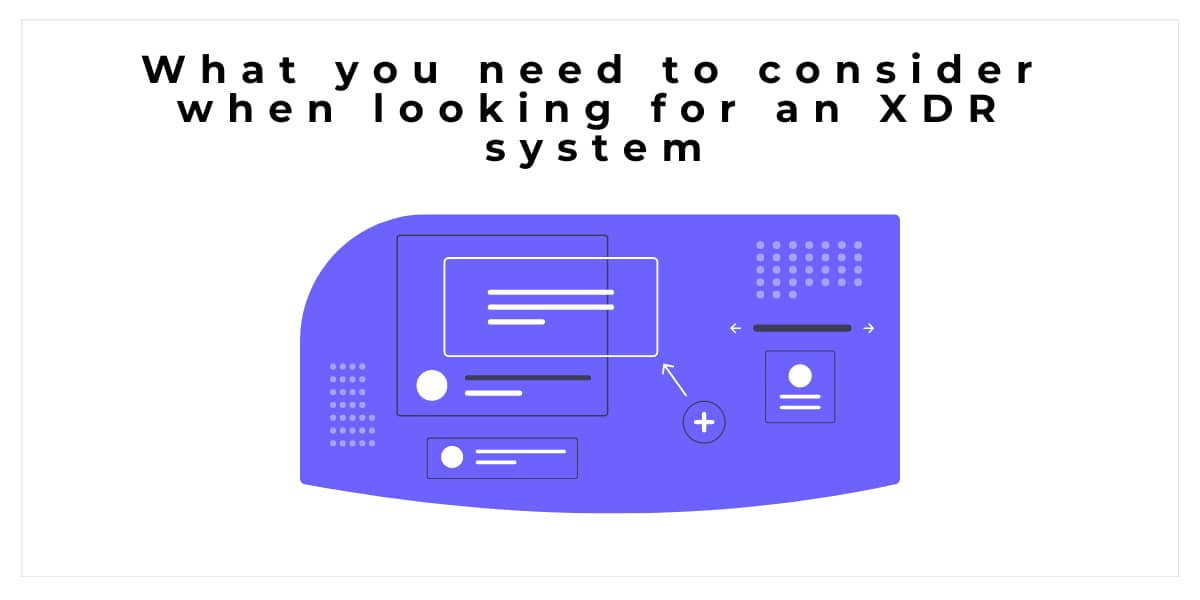With the increasing number of cyber threats, organizations are now looking for ways to protect themselves from sophisticated attacks. One of the ways that organizations are doing this is by investing in an XDR system. XDR stands for eXtended Detection and Response, and it is an advanced security system that combines multiple security technologies to provide comprehensive security coverage. An XDR system is designed to detect and respond to security threats across an organization's entire IT infrastructure. In this article, we will discuss what you need to consider when looking for an XDR system.
1. Integration with Existing Security Infrastructure:
When looking for an XDR system, it is essential to ensure that it can integrate with your existing security infrastructure. This is because most organizations have already invested in several security solutions, such as firewalls, anti-virus software, and intrusion detection systems. The XDR system should be able to work seamlessly with these existing security solutions to provide better security coverage.
2. Threat Intelligence:
The XDR system should have the capability to analyze and correlate threat intelligence from multiple sources to detect security threats. The system should also have the ability to automate the analysis of threat intelligence, which will help reduce the workload of security analysts. The XDR system should also have the capability to learn from past security incidents and use that knowledge to improve threat detection and response.
3. Real-Time Visibility
The XDR should provide real-time visibility into your organization's IT infrastructure. This means that it should be able to monitor all the devices, applications, and networks in your organization in real-time. Real-time visibility will help security analysts detect and respond to security threats quickly, reducing the time it takes to mitigate the impact of a security incident.
4. Automated Response
The XDR system should have the capability to automate the response to security incidents. This means that it should be able to take action to contain and mitigate the impact of a security incident without human intervention. Automated response will help reduce the workload of security analysts, enabling them to focus on more critical security tasks.
5. Machine Learning and Artificial Intelligence
The XDR system should have the capability to use machine learning and artificial intelligence (AI) to detect security threats. Machine learning and AI can analyze vast amounts of data, identifying patterns that are not apparent to humans. Machine learning and AI can also learn from past security incidents and use that knowledge to improve threat detection and response.
6. Scalability
The XDR system should be scalable, meaning it should be able to grow as your organization grows. As your organization's IT infrastructure expands, the XDR system should be able to handle the increased workload without compromising its performance. Scalability will help ensure that the XDR system can provide comprehensive security coverage even as your organization expands.
7. Ease of Use
The XDR system should be easy to use and manage. It should have an intuitive user interface that makes it easy for security analysts to analyze security threats and respond to them. The XDR system should also have a centralized management console that enables security analysts to manage and maintain the website or system from a single location.
8. Compliance
The XDR system should comply with industry-specific regulations, such as HIPAA, PCI-DSS, and GDPR. Compliance is essential for organizations that handle sensitive information, such as healthcare organizations, financial institutions, and government agencies.
Conclusion
In conclusion, investing in an XDR system is an excellent way to protect your organization from sophisticated cyber threats. When looking for an XDR system, it is essential to consider integration with your existing security infrastructure, threat intelligence, real-time visibility, automated response, machine learning and artificial intelligence, scalability, ease of use, and compliance with industry-specific regulations. By considering these factors, you can find an XDR system that will provide comprehensive security coverage for your organization.








